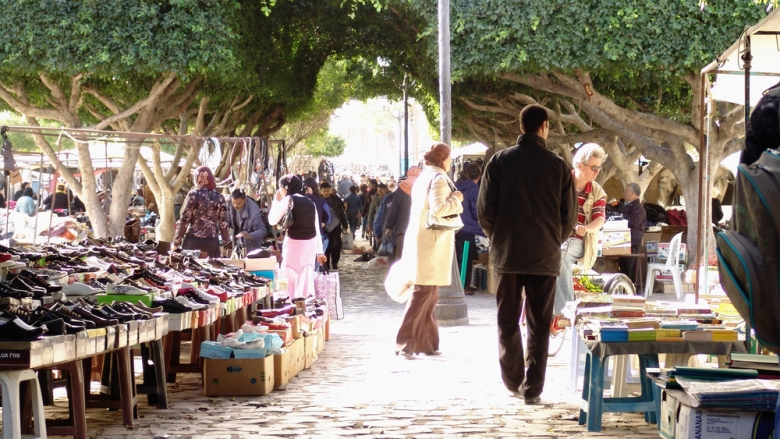Existing supply has not adapted to existing demand, with many people using informal services for savings and credit. Banks have low portfolio quality: about 15% of loans are in arrears and the banks lend primarily to salaried workers; in 2013, there were about 16 billion TND (7,265 billion euros) in outstanding loans spread across 1.3 million borrowers, according to the Central Bank. About 338,000 businesses were financed in 2013.
The majority of financial institutions consider the very small, small, and medium enterprise (VSSME) segment of micro-financing, risky and opaque. A 2014 IFC survey found that people working in 29% of the VSSMEs it had examined had never attempted to open a bank account; 37% reported needing financing but never contacting a financial institution; 78% used cash to pay their suppliers, and 91% used cash to pay their employees
The postal savings account network is almost as extensive as that of the entire banking sector and far more evenly spread across Tunisia; in 2014, it had 1,051 branches. It is thus a key player when it comes to financial inclusion. But it has only 178 ATMs, and a quarter of its branches are not connected to a central server. They also have relatively limited opening hours and strict minimum payments, making the network difficult to use for micro-savings requiring regular withdrawals and very small deposits. Over 50% of the 5.5 million postal accounts are anyway inactive, with no transactions having been made for the past two years or longer.
In 2011, legal reform laid the foundation for the development of the microfinance sector, authorizing new actors as associations and limited liability companies, and creating a modern regulatory agency (the microfinance supervisory authority). In the past 12 months, authorizations have been granted to four newly-created companies (Taysir, Microcred Tunisia, Advans Tunisia, and the Entrepreneurship Financial Center). Given this sectoral expansion, Micro-Finance Institutions (MFIs) are set to play an important role in financial inclusion in Tunisia.
Other financial service providers, including leasing companies and insurance providers, comprise only a negligible part of Tunisia’s financial sector. Insurance company premiums represent less than 2% of the country’s GDP. Digital finance, the provision of financial services through electronic means, has seen some progress in recent years, with four services on the market. These products, however, offer limited services, lack inter-operability, and have seen limited uptake. Remarkably, less than 4% of Tunisians use mobile financial services.
Looking ahead, the opportunities for financial inclusion in Tunisia are significant. There remain, however, a number of structural and short-term challenges to overcome. Expanding beyond microcredit to develop savings, micro-insurance, and payment services would require:
- identifying a high-level advocate for financial inclusion;
- coordinating a national financial inclusion strategy;
- conducting a thorough market study to obtain nationally-representative and up-to-date data on market characteristics;
- clarifying the role of different public and private actors in the market (e.g., Tunisian Post, banks, microfinance institutions, mobile network operators, among others);
- and finally, developing a robust consumer protection framework to manage sectoral growth and address ongoing challenges.
Overall, financial inclusion can be an important mechanism to promote economic growth and provide a better future for low-income Tunisians. Progress will require public and private actors to work together beyond their narrow institutional interests to pursue reform through concerted action. But—given the recent reforms in the microfinance industry, the reach of the Tunisia postal savings system, and recent opportunities to expand digital finance—Tunisia has the opportunity to set the example for other countries in the region, providing much needed hope for micro-financing in Tunisia and beyond.
---------------------------------------------------
[1] The Findex survey, developed by the World Bank with financing from the Gates Foundation, is based on representative surveys of the population covering 148 countries and comprising a series of indicators on the use of financial services.

